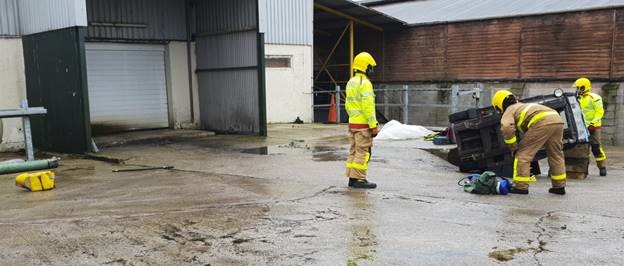Painting and decorating employer sentenced after worker is seriously injured falling from height
A Northamptonshire painting and decorating employer has been sentenced after an employee sustained serious, life changing injuries after falling from height.
Wellingborough Magistrates’ Court heard that, on 7 August 2018, an employee of Ian Ramsay was severely injured when he fell from height whilst installing a roof ladder on a pitched roof at a property in Mawsley, Northamptonshire. The fall resulted in the employee being permanently paralysed from the chest down. The homeowners hired Mr Ramsay to paint the exterior windows and soffit boards of their property, including the painting of dormer windows within their roof. The employee was in the process of setting up ladders to access the dormer windows when he fell from height.
An investigation by the Health and Safety Executive (HSE) found that the incident could have been prevented if the work at height hierarchy had been followed in the planning process and if appropriate equipment had been provided to employees, such as fully compliant scaffolding. The risk assessment should have identified that this work was not short duration and that the use of ladders was not appropriate.
Ian Ramsay of Padmans Close, Mawsley, Northamptonshire, pleaded guilty to breaching Section 2(1) of the Health and Safety at Work etc. Act 1974. He was sentenced to a 12-month community order, 160 hours of unpaid work and ordered to pay costs of £2,124.28 with a surcharge of £85.
Speaking after the hearing, HSE inspector Rachel Grant said “Employers and those in control of any work at height activity must make sure work is properly planned, supervised and carried out by competent people.
“This includes using the right type of equipment for working at height. In this instance, the painting of the soffits and windows was not short duration work and should have been done from appropriate work platforms. Ladders were not the appropriate equipment.”
Notes to Editors:
- The Health and Safety Executive (HSE) is Britain’s national regulator for workplace health and safety. We prevent work-related death, injury and ill health through regulatory actions that range from influencing behaviours across whole industry sectors through to targeted interventions on individual businesses. These activities are supported by globally recognised scientific expertise. www.hse.gov.uk
- More about the legislation referred to in this case can be found at: www.legislation.gov.uk/
- HSE news releases are available at http://press.hse.gov.uk
The post Painting and decorating employer sentenced after worker is seriously injured falling from height appeared first on HSE Media Centre.
